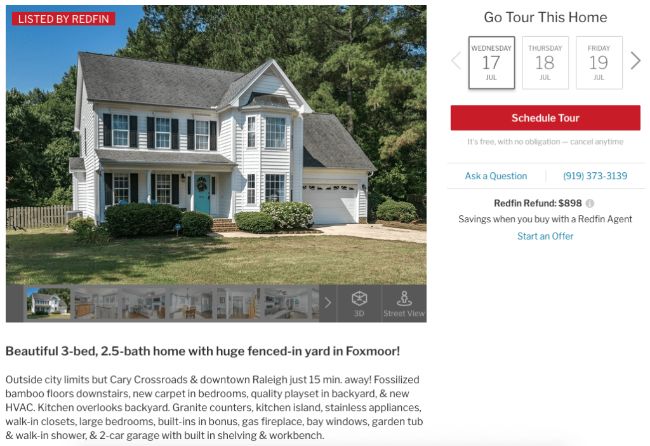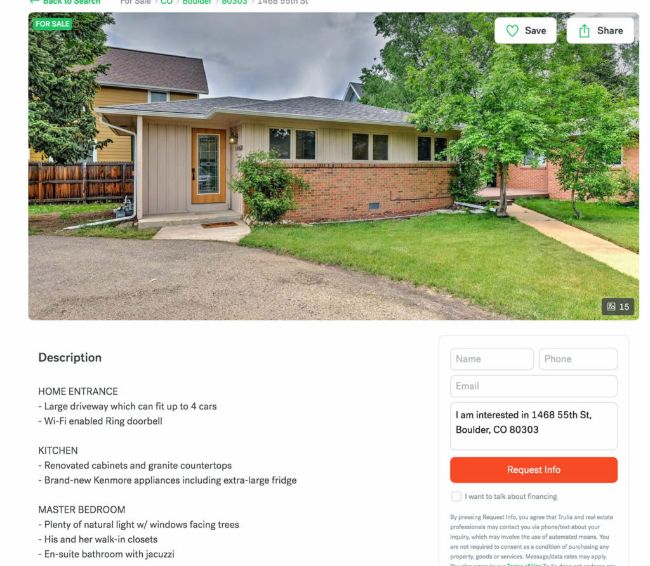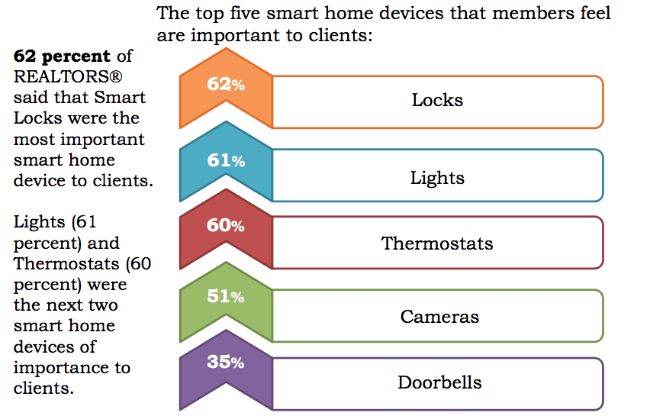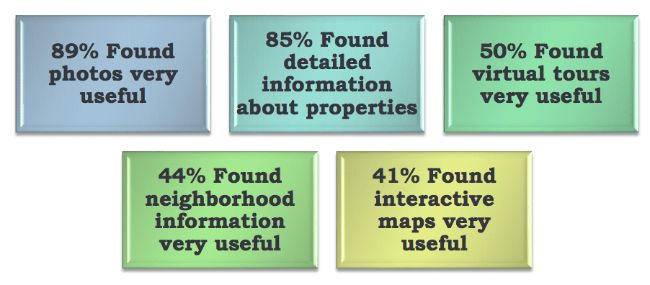9 tips for how to write real estate descriptions buyers will love
A well-written listing can help a home sell faster. Read these simple tips before publishing your next real estate ad or property description.
Ah, real estate descriptions. Few love to write them; everyone enjoys critiquing them. As a busy agent, finding time to write one for each property can feel like a struggle. It’s all too tempting to just write, “2 Bed. 4 Bath. Newly Renovated. Contact for more details.”
Here’s the good news: you don’t have to be the next Hemingway to write enticing descriptions! We’re going to share 11 simple tips to make your listing details shine. But first, how much do real estate descriptions impact sales?
Do real estate descriptions really matter?
The short answer is yes. However, it’s hard to say definitively as there aren’t a ton of reliable case studies out there. But there is evidence that certain words can influence buyers to make decisions.
Take, for example, Point2Homes’ annual study on the most used words in properly listing descriptions. It highlights the fact that real estate agents adjust which home selling features and adjectives they emphasize to what buyers are specifically searching for.
The point is, people read what’s on your website and it affects how they act. Of course, no one will purchase a home based on a beautiful description, but the right words can convince someone to come to your open house. And once they’re inside your home, you have a much greater chance of closing a deal.
How do you write real estate descriptions that sell?
And now, what you came here for: nine easy-to-implement tips that will make your real estate description compelling.
1. Start with a strong headline
You should always lead with the best photo of the exterior of your listing. (While we’re on the topic, here’s a helpful article on taking good real estate photos with your phone.) If there’s a selling point that someone won’t see from the first picture, that’s where a good headline comes in. This example from a listing on Redfin illustrates this point perfectly:

Notice the way the headline gives the necessary info—3-bed, 2.5 bath—then goes on to mention the huge fenced-in yard. This entices buyers who are seeking a home with a large outdoor area to click through the rest of the photos and possibly schedule a tour. If it hadn’t been in the headline, they make have scrolled past this listing.
When you’re competing with hundreds of other properties, you need to make sure everything about your online listing is helping you stand out.
2. Be accurate and specific
Searching for a home is exciting, but also stressful and time-consuming. If your description leaves out important info, it’s a red flag for buyers. These leads are quickly going to move on to avoid wasting effort looking at a questionable listing. At a minimum be sure to include the:
- Number of bedrooms and bathrooms (with photos of each one)
- Square footage of the property
- Accurate location information
This is the least amount info you can include. We recommend taking it a step further and getting specific. For example, don’t just say, “Hardwood flooring.” Is it cherry, walnut, red oak? If there’s a washer/dryer, what brand is it? How about the oven—is it a double-burner? Mention that! You never know what buyer is looking for, the more enticing info you give them, the better.
It should go without saying that you should only get specific if it will help your listing. Don’t mention the brand of appliances if they’re all 12 years old and will need to be replaced soon.
3. Organize the Description by Room
It may take time to write a good description, but reading it should be super easy. Instead of presenting a wall of text, cut your description down into bite-sized, skimmable pieces. One way to do this is by creating a section for each room with bullet points. Here’s an example we found on Trulia which we love:

4. Avoid these four words
Commonly found in real estate descriptions, these four words can seriously turn buyers off. It’s best to leave them out.
Fixer-upper
It’s good to be honest about what needs fixing, but no one is thrilled to take on a renovation project. Don’t use this term in your headline, unless you’re really selling a home that’s been highly neglected.
Starter home
Your home may be the right fit for a small family, even if it’s not their first “starter” home. People can read the square-footage on your listing and determine for themselves whether the size works for them.
Priced to sell
This is the equivalent of hearing “SALE SALE SALE” on radio ads. It distracts from what’s special about your property and sounds a bit pushy.
Cozy
Cozy is normally a positive word, but in the context of real estate, people associate it with being uncomfortably small. If your photos and listing info are accurate, there’s no need to emphasize that you’re not selling a sprawling mansion.
5. Tell people what’s unique
Properties often have attractive, small details that may not be visible in the photos. Is there custom shelving in the closet? Maybe an electric fireplace in the living room? These elements add character, and anyone reading your home description should be able to learn about them.
With the rise of the smart homes, it’s also a good idea to mention any tech-enabled products your home may feature. The Center for REALTOR® Technology surveyed its members to find out what products clients care about. Here are their findings:

Don’t wait until your leads show up at your house to tell them about these selling points. Include them in your description.
6. Brag about what’s near the home
Take a look at the below graphic from the National Association of Realtors Home Buyer and Seller Generational Trends Report. They asked buyers which information they find very useful when making a home-buying decision.

As you can see, detailed information about the property is useful to nearly everyone. However, a lot of agents fail to include neighborhood information, which is useful to almost half of buyers! The L-word is important: location. When writing your description, take a few sentences to talk about nearby:
- Schools
- Grocery stores
- Shopping centers
- Parks
Buyers want to be able to imagine themselves living in the home you’re trying to sell. Including neighborhood info helps them visualize their potential new life. If this interests you, you might want to read about how text messaging can be a great alternative to paper sign in sheets for open houses.
7. Cool it with the all caps
There’s a time and place for using caps lock, but use it sparingly. For example, if you scroll back up to the example under tip number three, you’ll see each section heading is in all caps. This makes it easier to quickly skim through the description. On the other hand, as a rule of them, avoid capitalizing adjectives. No need to say, “AMAZING 3-Bedroom Home with UNIQUE fireplace.”
8. Use a free grammar-checking tool
Large bathrooms are excellent. 🛁 Batrooms, no so much. 🦇 A misspelled word and missing period isn’t necessarily a deal-breaker, but it’s always best to be perceived as professional.
No need to hire an editor. Grammarly is a free tool which checks your spelling, grammar and sentence structure to suggest helpful changes. Installing it on your web browser only takes a minute and it can go along way in keeping your descriptions professional.
9. Add a text-enabled number at the end
If someone is interested in your property, it should be as easy as humanly possible for them to get in touch. Clearly display your contact info at the end of your description.
Want to get a competitive advantage over other agents? Text-enable your number. If an interested buyer is busy, it’s more convenient for them to write a text requesting more info than to place a call or email. If you go with this option, be sure to let readers know they can text you:
For more info on this property, call or text 888-420-54097!
Read about how John Michael Grafft, a 30 Under 30 Realtor® and Berkshire Hathaway Top 1% in the World Agent, uses text messaging for his Chicago-based real estate firm.
Text marketing doesn’t just benefit your real estate descriptions. It can also make riders or for-sale signs more effective. Here’s how: you can create unique text-4-info keywords for all of your properties. For example, someone could text “321MainSt” to 833-987-1264 to get more info on your listing.
At SimpleTexting, we can text-enable your current business number—even if it’s a landline. We also offer unlimited keywords with every plan. Sign up for a 14-day free trial to discover how you can use text messaging for your real estate business.
Real estate descriptions are important first impressions
A good real estate communication strategy has many pieces, and property descriptions are just the beginning. The same way you’d stage all the visible parts of a home, you should take care of all parts of your online presence. Keep these nine tips in mind the next time you’re adding a listing to your website or a third-party site.
This article was published on July 18, 2019 by Alfredo Salkeld, and was updated on August 3, 2023, by Dani Henion. Nathan Ellering contributed to this piece.